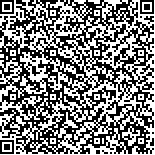下载中心
优秀审稿专家
优秀论文
相关链接
摘要

本文面向多源高分辨率遥感影像自动化融合的应用需求,探索按需应用的智能化融合方法,充分利用不同分辨率和不同时相的高分辨率多源遥感影像数据资源与特性,研究了影像融合数据源选取的决策树算法,建立了遥感影像融合规则知识库,并自动化选取适合的融合算法,提出了Curvelet_HCS算法,对低频和高频系数选用不同的融合规则,改善了HCS算法的光谱失真问题,可同时融合多光谱影像的多个谱段,并保持更丰富的空间细节信息。根据融合评价结果对遥感影像融合规则知识库进行更新,实验验证表明了该套方法的有效性,为开展大规模智能化的多源遥感影像融合应用提供了重要的方法和技术支撑。
Intelligent fusion of multi-source high resolution remote sensing images is attracting more attention due to its extensive applications. To satisfy application requirements of multi-source high resolution remote sensing image fusion, this paper studies "on-demand" intelligent fusion of multi-source remote sensing images. Particularly, this study focuses on intelligent fusion of different temporal high-resolution remote sensing images at different resolutions.
This paper presents a novel intelligent fusion approach to achieve automatic image source selection as well as fusion method recommendation. This research applies the decision tree algorithm to high resolution remote sensing image fusion. The decision tree is trained to build the knowledge base of fusion rules, which is off-line updated. Each training sample consists of remote sensing images, fusion methods, and the evaluation results. Besides, to solve the problem of spectral distortion cause by hyperspherical color space transform, this paper proposes a fusion method renamed as Curvelet-HCS based on the second generation Curvelet transform and hyperspherical color space transform. The main idea of Curvelet-HCS is as follows. Curvelet-HCS decompose the image into low and high frequency components and employ different fusion rules for these two components. In detail, for the low frequency component, low frequency coefficients are computed as a weighted sum of low frequency coefficients of two fusing images, where weights are defined as functions of regional standard deviation and the local direction information entropy. Similarly, for the high frequency component, the high frequency coefficients are determined by the maximum.
This research experiment the Curvelet-HCS method with different sources of satellite images, including the GF-1 and GF-2 satellite multispectral and panchromatic images. To evaluate the fusion performance of the proposed approach objectively, the fused images are quantitatively analyzed based on the mean, the standard deviation, the correlation coefficient, the information entropy and the average gradient. The results show that the image has a better visual effect after fusion, and the proposed fusion method achieves better performance compared to other fusion methods including Principal Component Analysis, Gramm-Schmidt, and Hyperspherical Color Sharpening.
This thesis presents an intelligent fusion method by studying the relationship among the remote sensing images, the fusion methods and the evaluation results. This fusion approach improves the level of automation and intelligence of multi-resource high resolution remote sensing image fusion. It is a beneficial exploration for researching the intelligent on-demand service pattern. Also, this paper proposes a Curvelet-HCS fusion method which can fuse more than three bands of MS image at one time. The experimental results demonstrate that the proposed method is an effective method for fusing multispectral image and panchromatic image, and obtains good fused images.

